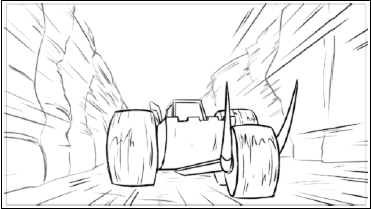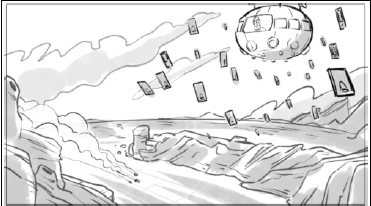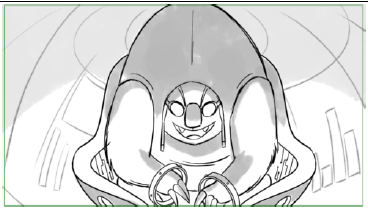T-SBCON-003-002
Visual language is a continuation of the 'Show, Don't Tell' idea. Visual language is the implementation of visual cues in art, used to help convey a message or idea. Elements and principles of visual language can be incorporated in a composition of a scene to enhance and support the story by guiding the audience to see and feel certain things. These cues exist in many forms.
Line
Lines are the most basic visual element. They can be used to define shape and figures, and they can indicate motion, emotion, and other elements. Lines can also be implied, such as a 'line of sight'.

Here lines are being used to show intense speed.
Shape
Shapes are a major building block of composition and are critical to each frame. Different shapes can represent different things and help to portray emotion and movement.

Here, shapes are being used to define each character's vehicle. This makes it easy for the viewer to identify each character clearly. Shapes are also used in the transition, giving a feeling of urgency and intensity.
Space
Space can put emphasis on how large or small an object is, or can be used to show depth in a scene with perspective.

This panel uses space and perspective to show how high up the space-bot is, and how far away it is from the racers below. It also shows the sheer expanse of the environment.
Tone
Tone incorporates lighting into the scene which gives a sense of space and depth to objects and the overall scene. A strong contrast in tone can create emphasis on a person or an object.

Here, tone is being used to give the character a menacing feeling as he is lit from below. Tone can also help to define background and foreground elements.
Colour
Colour can also be used to convey an idea, although colour is used more in mood boards and not as often in storyboards. A mood board is usually created between the storyboarding and production stage. With colour you can convey moods, temperatures and times of day without having to express this in dialogue to the audience.